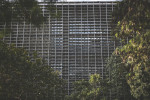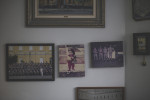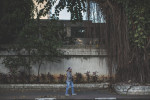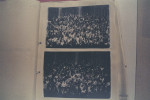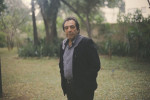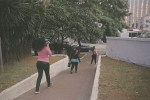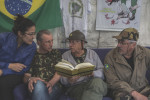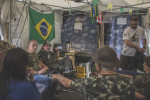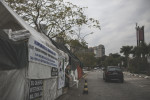Brazil: Rising Nostalgia for Dictatorship Return
In the Shadows of Brazil’s Dictatorship
For M le Monde about Brazil’s dictatorship nostalgia (mixed expired film and digital photography). July 2016.
During the April 17 session when Brazil’s lower house voted to impeachment of former leftist President Dilma Rousseff, an ultra-conservative congressman called Jair Bolsonaro, a former army parachutist and possible 2018 presidential candidate, dedicated his vote that day to the memory of Col. Carlos Alberto Brilhante Ustra, who headed the DOI-CODI intelligence agency responsible for the torture, death and disappearances of the opposition during the military rule.
For three years in the early 1970s, Ms. Rousseff, a former Marxist guerrilla fighter, was subjected to electric shocks on different parts of her body and suspended upside down naked from a rod. Her wrists and ankles bounded. She suffered internal bleeding and one of her teeth was knocked out by a punch from an interrogator.
Nostalgia authoritarian rule continues to rise since Ms. Rousseff’s impeachment, Brazil’s first female president. She was voted out of office by the country’s corruption-prone senate after a dramatic 16-hour impeachment trial which ultimately ended 13 years of Workers’ Party rule in order to halt the Operation Lava Jato corruption investigation - supported by Ms. Rouseff - into kickbacks at state oil company Petrobras.
The dictatorship era (1964-1985) was an eager way to maintain class hierarchy and uphold Brazilian family values - which tend to reflect the country’s conservative (and growing Evangelical) elite. One congressman wears a military uniform to work and calls the 1964 coup a “democratic revolution.”
According to Mr. Bolsonaro, Brazilians miss the moral values of the military: “There was decency and respect for the family. Things today are disgraceful,” he said in an news interview - which includes the skewed perception that corruption didn’t exist during the dictatorship. But many of the new middle class are also calling for a military intervention in fear of PT’s “communist” influence. {Most Brazilians don't differentiate communism from socialism}.
Brazil’s conservatives who long for the days of “family values” also have saudades for an era when their public space were not threatened by the economically-uplifted lower class who were expected of nothing more than to follow orders. Even if it means an end to civil liberties: what didn’t exist in those days was freedom of speech and a free press to denounce government failures.
